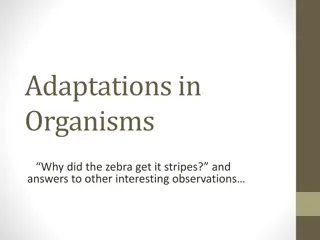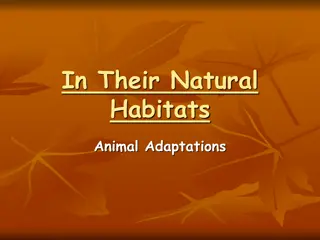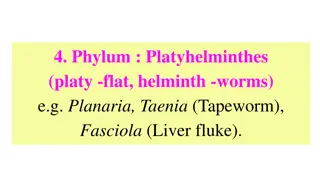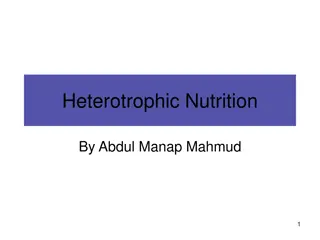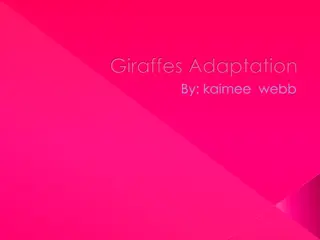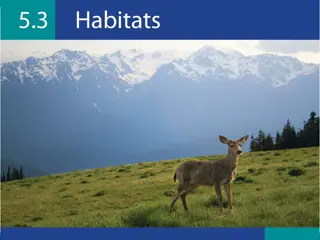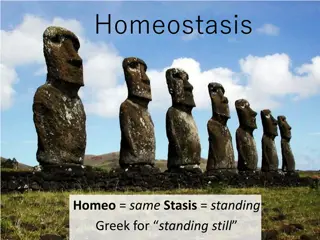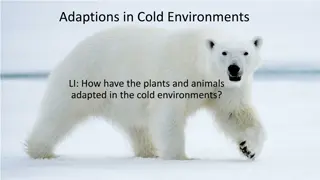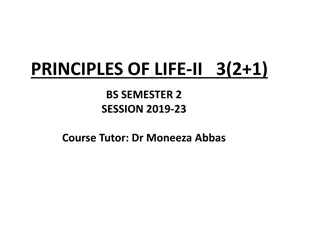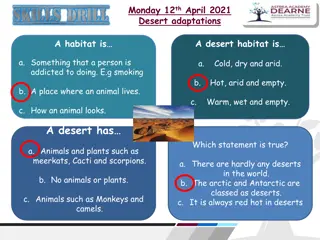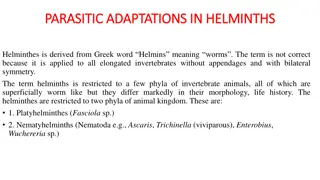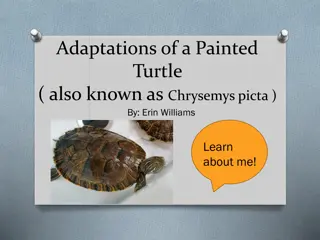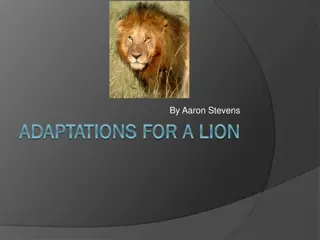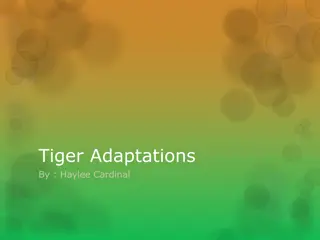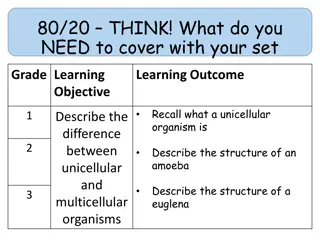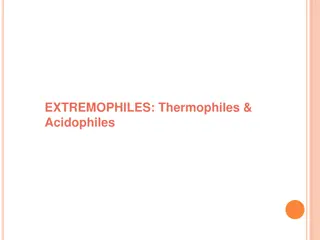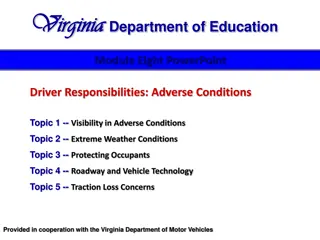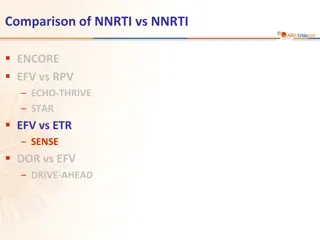Adaptations to Survive Adverse Conditions in Organisms
Organisms develop various adaptations to survive adverse conditions like extreme heat, cold, drought, or lack of food. Through dormancy, hibernation, aestivation, and daily torpor, they regulate their metabolic activities to conserve energy and ensure survival in challenging environments.
Uploaded on Oct 06, 2024 | 0 Views
Download Presentation

Please find below an Image/Link to download the presentation.
The content on the website is provided AS IS for your information and personal use only. It may not be sold, licensed, or shared on other websites without obtaining consent from the author. Download presentation by click this link. If you encounter any issues during the download, it is possible that the publisher has removed the file from their server.
E N D
Presentation Transcript
Metabolism and Survival Key Area 5a Metabolism and Surviving Adverse Conditions
By the end of this topic you should be able to: Explain the meaning of dormancy and give an example of organisms who use this as a means of survival Explain the difference between predicted and consequential dormancy Give examples of hibernation in animals and aestivation in organisms and how these help their survival in adverse conditions Say what is meant by daily torpor and why it is important for some organisms
Adverse conditions In some environments there exists extreme conditions: Extreme heat or cold Drought Lack of food These conditions can change, be cyclic or be unpredictable depending on the country and time of year. Therefore, many environments vary beyond the tolerable limits for normal metabolic activity for particular organisms. Homeostatic control would break down as it would no longer be able to produce enough energy to bring about its corrective mechanisms to return its internal environment to the norm and so could prove fatal In order to survive, organisms have adapted to survive or avoid these conditions
Surviving Adverse Conditions Organisms can have adaptations to help them survive adverse conditions. These can be: Structural e.g. body size, appendages, insulation, colour Physiological e.g. dormant states such as hibernation ( winter sleep ); aestivation ( summer sleep ); daily torpor (small period of reduced activity) Behavioural e.g. collective den, snow roost
Surviving adverse conditions When an organism finds itself in adverse conditions it will reduce its metabolic rate as it would use too much energy trying to maintain normal activity. For instance, it would spend too much energy trying to keep warm in extreme cold conditions (or vice versa) One way of achieving this is by entering a period of dormancy
Dormancy Dormancy is part of some organisms life cycle where it temporarily reduces its growth and development by reducing its metabolic rate, heart rate, breathing rate and body temperature to the minimum required for cells to survive. Dormancy can be predictive or consequential
Predictive Dormancy An organism enters a dormant phase before the onset of adverse conditions and it is usually genetically programmed Many trees respond to decreasing photoperiod (day length) and temperature in autumn by shedding their leaves and entering their dormant stage before winter
Consequential Dormancy An organism enters a dormant phase after the onset of adverse conditions and it is usually a response by organisms living in unpredictable environments There are advantages and disadvantages to this: Advantage can remain active for longer and exploit environmental resources Disadvantage sudden, severe change in environmental condition may kill organism before they have a chance to become dormant
Dormancy Examples of dormancy in animals include: Hibernation (eg bear, dormouse) Aestivation (snails, lungfish) Daily Torpor (birds, mammals)
Hibernation Hibernation is often defined in terms of mammals and is usually brought about to survive the adverse conditions of winter/low temperatures. Hibernation is usually a predictive response to shortening day- length and can last weeks or months. The mammal tends to eat extra food before hibernating which becomes a store of fat.
Hibernation During hibernation the mammals metabolic rate is reduced resulting in a decrease in: Body temperature Herat rate Breathing rate General activity This allows the mammal (bear, doormouse) to survive the period of adverse conditions
Aestivation This form of dormancy allows some animals to survive periods of high temperature or drought during the summer Aestivation is not just due to a lack of food but the conditions are too hot and dry for the animal to survive.
Aestivation The process usually involves burrowing into the ground where the temperature is cooler and reducing metabolic activity in a similar manner to hibernation Examples include: snails seeking high branches (safer), retreating into its shell and sealing the opening with dried mucus (except a small hole for gas exchange) Lungfish burying itself in the mud of a dried lake and surrounding itself with a layer of dried mucus until the rainy season returns (can survive like this for up to 3 years)
Daily Torpor Daily torpor is a period (within 24 hours) of reduced activity in an organism which has a high metabolic rate (birds and mammals) The physiological state changes so it is similar to short-term hibernation: Heart rate reduces Breathing rate reduces Body temperature decreases These all increase an organisms chance of survival by reducing the energy required to maintain a high metabolic rate
Daily Torpor Some birds (hummingbirds) feed during the day and exhibit torpor at night whilst others (bats) feed at night and exhibit torpor during the day These birds have a relatively large surface area through which they can lose heat. If endotherms, this means they need to have a high metabolic rate to maintain an optimum body temperature This daily period of torpor helps reduce the level of energy consumption at times of the day when they have little chance of obtaining food or are at risk from predators



